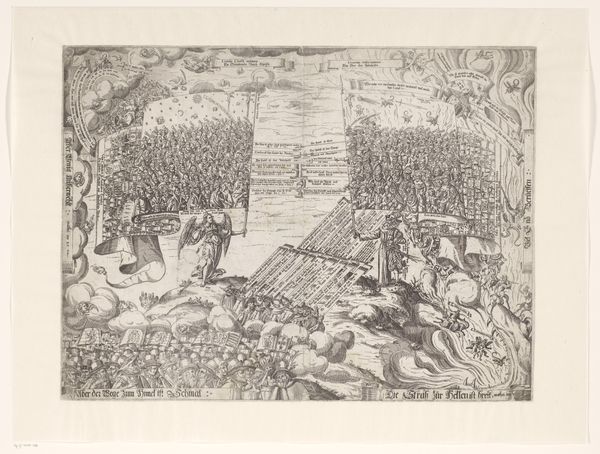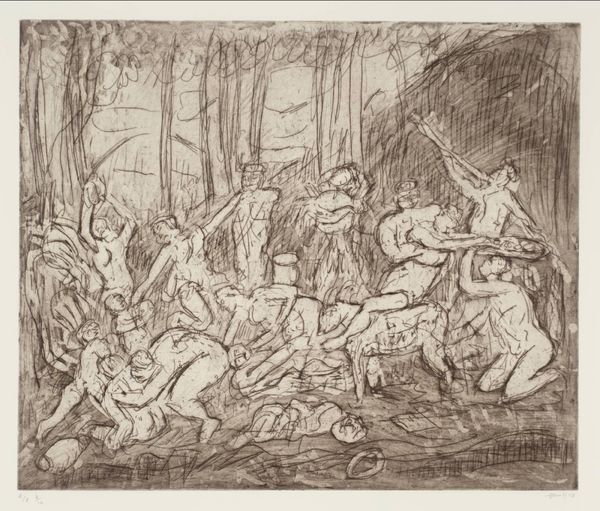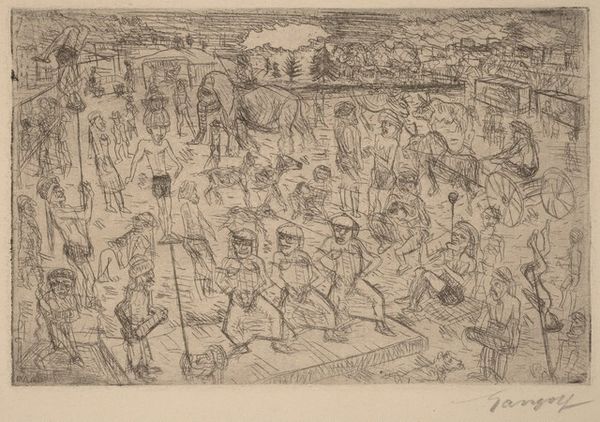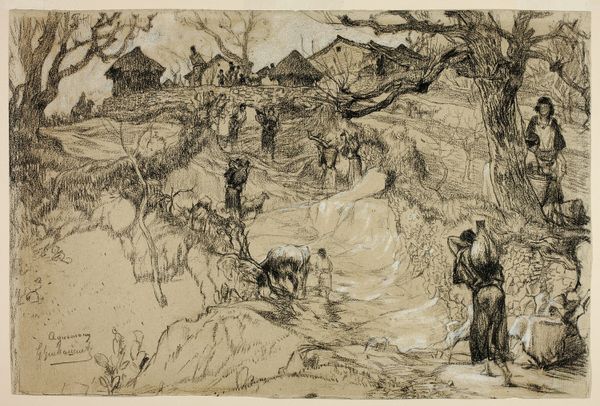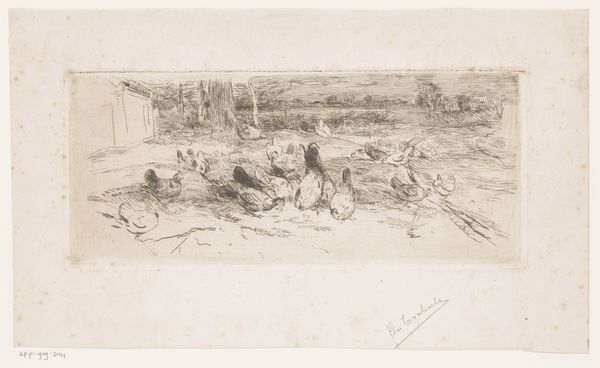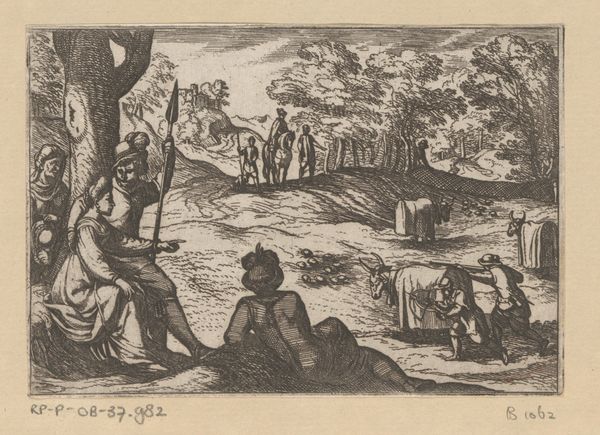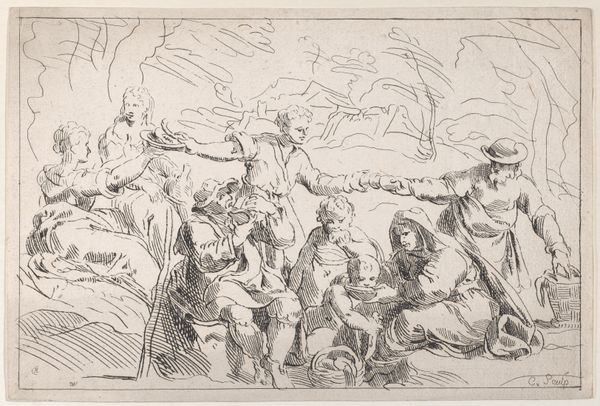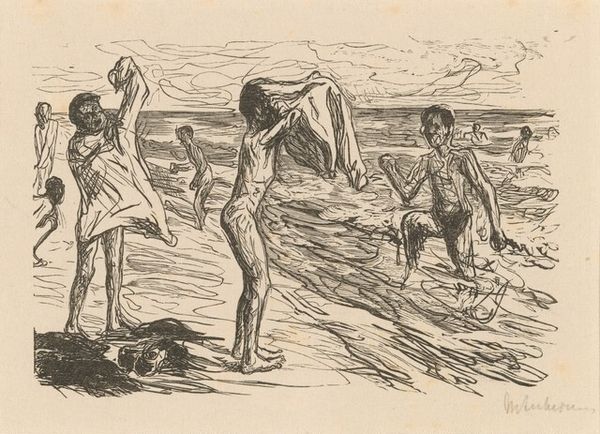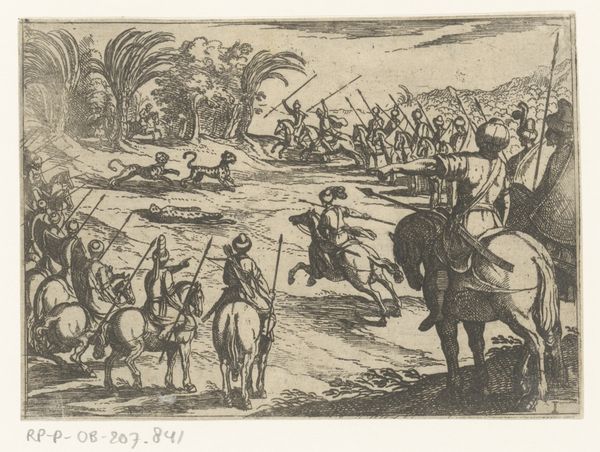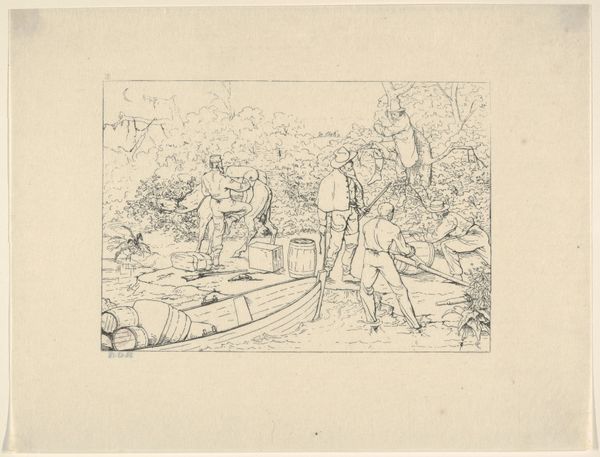
Hyde Park Rider, THE BONES ARE ALL INSIDE!!! (ROTTEN-ROW LONDON 1931) 1931
0:00
0:00
drawing, print, etching, ink
#
drawing
# print
#
etching
#
landscape
#
figuration
#
ink
#
line
#
genre-painting
Dimensions: sheet: 36.8 × 30.6 cm (14 1/2 × 12 1/16 in.) plate: 13 × 16.2 cm (5 1/8 × 6 3/8 in.)
Copyright: National Gallery of Art: CC0 1.0
Editor: This is "Hyde Park Rider, THE BONES ARE ALL INSIDE!!! (ROTTEN-ROW LONDON 1931)" by Paul Gangolf, made in 1931, using etching, ink, drawing, and print techniques. It has a very lively and frantic feel to it with all these horses and riders layered together, yet still looks sparse with the light line work. What stands out to you about this piece? Curator: The title immediately grabs my attention: "THE BONES ARE ALL INSIDE!!!" This morbidly playful addition, juxtaposed against the aristocratic leisure activity depicted, offers a powerful social commentary. The piece invites us to consider how even in scenes of privilege and recreation, mortality and social decay lurk beneath the surface. Look at how the frenetic linework seems to almost decompose the scene itself. Editor: Decomposition? That's interesting. How so? Curator: Consider the historical context. 1931 was a time of significant economic hardship and growing social unrest. The riders, engaged in what was a traditionally elite activity, appear almost spectral, their leisure perhaps a fragile facade over societal anxieties. Are they truly enjoying themselves, or are they figures trapped within a decaying social structure? Editor: So you're saying the artist is using this scene to critique the wealthy? Curator: It's more complex than a simple critique. It’s a portrayal of the anxieties of a specific time. Gangolf perhaps aimed to expose the inherent vulnerability and, dare I say, the 'bones' of a system seemingly built to last. This etching serves as a visual record of societal anxieties during a period of immense social and economic upheaval, asking us to question the very foundations of privilege. Editor: I never thought about it that way, but that definitely adds another layer of meaning. I thought it was just a depiction of horse riding. Curator: Precisely. Art has the power to reflect and refract the world around it. In Gangolf's work, we find not just an image of leisure, but a poignant reflection on mortality, class, and the anxieties simmering beneath the surface of a seemingly stable society.
Comments
No comments
Be the first to comment and join the conversation on the ultimate creative platform.
